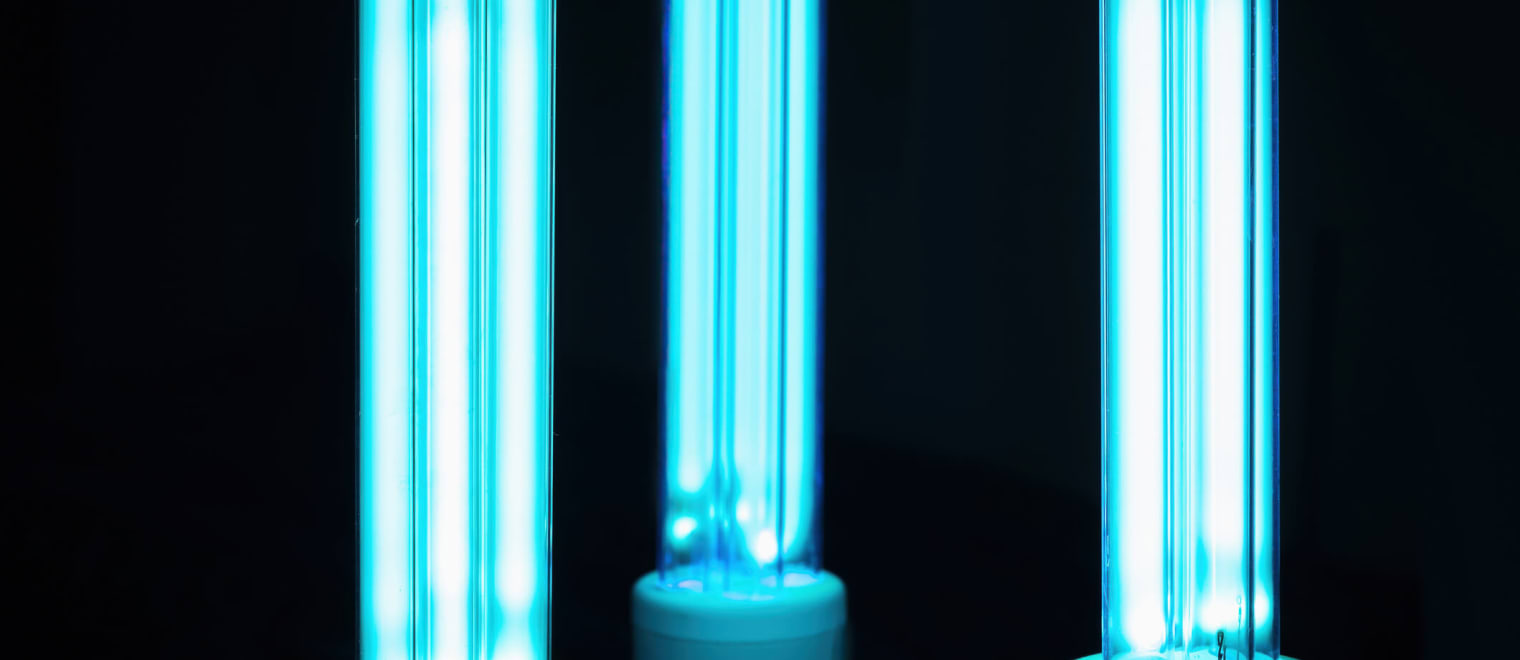This informal CPD article UV-C Light: How does it kill Covid and other deadly bacteria? Was provided by Tungsram UK, premium quality lighting solutions for indoor and outdoor applications, traditional lamps, automotive, as well as drivers & transformers.
UV-C Light: How does it kill Covid and other deadly bacteria?
UV light technology is one of the most effective sanitation tools right now to destroy the new coronavirus SARS-CoV-19 and, in fact, all other viruses and bacteria. Yet this technology is not new at all: we have known about the disinfectant properties of ultraviolet radiation for nearly 150 years, and we have been using low-pressure mercury arc lamps to kill bacteria and to inactivate viruses for the past 85 years. But with a pandemic paralyzing the world and unknown infectious diseases looming over the future, this clean, safe technology is about to rise and to offer an affordable way to destroy pathogens. How does it work? How does UV-C light kill or inactivate microbes? Is it really safe? Many ask these questions today and Tungsram has created this short guide to walk you through the science behind the solution.
Short-wavelength ultraviolet “light” (radiant energy)
Short-wavelength ultraviolet “light” (radiant energy) has been shown to kill bacteria and spores and to inactivate viruses. Wavelengths in the photobiological ultraviolet spectral band known as the “UV-C,” from 100 to 280 nanometers (nm), have been shown to be the most effective for disinfection. UV-C wavelengths consist of photons (particles of light) that are most energetic in the optical spectrum (comprising UV, visible, and infrared) and therefore are the most photochemically active.
Can UV-C kill viruses including SARS-CoV-2?
The International Ultraviolet Association states that UV-C kills living bacteria, but viruses are technically not living organisms; thus, we should correctly say it “inactivates viruses.” To do so, the UV-C must directly illuminate the virus at the effective dose level.
How does this work?
Individual, energetic UV-C photons photochemically interact with the RNA and DNA molecules in a virus or bacterium to render these microbes non-infectious. This all happens on the microscopic level. Viruses are less than one micrometer (µm, one-millionth of a meter) in size, and bacteria are typically 0.5 to 5 µm. Commonly used germicidal UV lamps generate predominantly 254-nm UV radiant energy. GUV radiant energy damages nucleic acids (DNA and RNA) by causing mutations that prevent replication, thus leading to the death of virtually all bacteria and inactivation of all viruses – both DNA and RNA types. Bacteria and viruses vary somewhat in UV susceptibility, with environmental organisms, fungal spores and mycobacteria being relatively harder to kill than more rapidly replicating and non-environmental microbes and most bacteria. But even fungi are effectively killed with high-dose UV, which is used, for example, to treat fungal contamination in air conditioning systems.
Is UV-C Light Safe?
As they cause sunburn, we all know about the harmful effects of UV-A and UV-B on the skin. However, UV-C breaks through an organism on a cellular level, effectively scrambling its DNA. UV-C’s effects on the human body vary depending on the length of exposure, but can cause painful burns on the skin. It can also cause temporary damage to the eyesight if observed directly. Therefore UV-C must be applied with careful safety measures and customers are advised to choose a manufacturer whose experience and quality certificates guarantee the maximum safety of their products.
Humans must not be directly exposed to UV-C light, but safety glass, protective clothing and eyewear combined with warning labels near all access panels or doors to a product containing UV lamps should keep them safe. The use of UV-C chambers or sanitising boxes is also an effective and safe way to clean commonly used products such as phones and laptops or retail products such as glasses, jewellery. During periods when venues are not in use, for example at night, UV-C is capable of disinfecting any empty spaces: buses, trains, stores, offices, airports, schools etc.
We hope this article was helpful. For more information from Tungsram UK please visit their CPD Member Directory page. Alternatively please visit the CPD Industry Hubs for more CPD articles, courses and events relevant to your Continuing Professional Development requirements.












